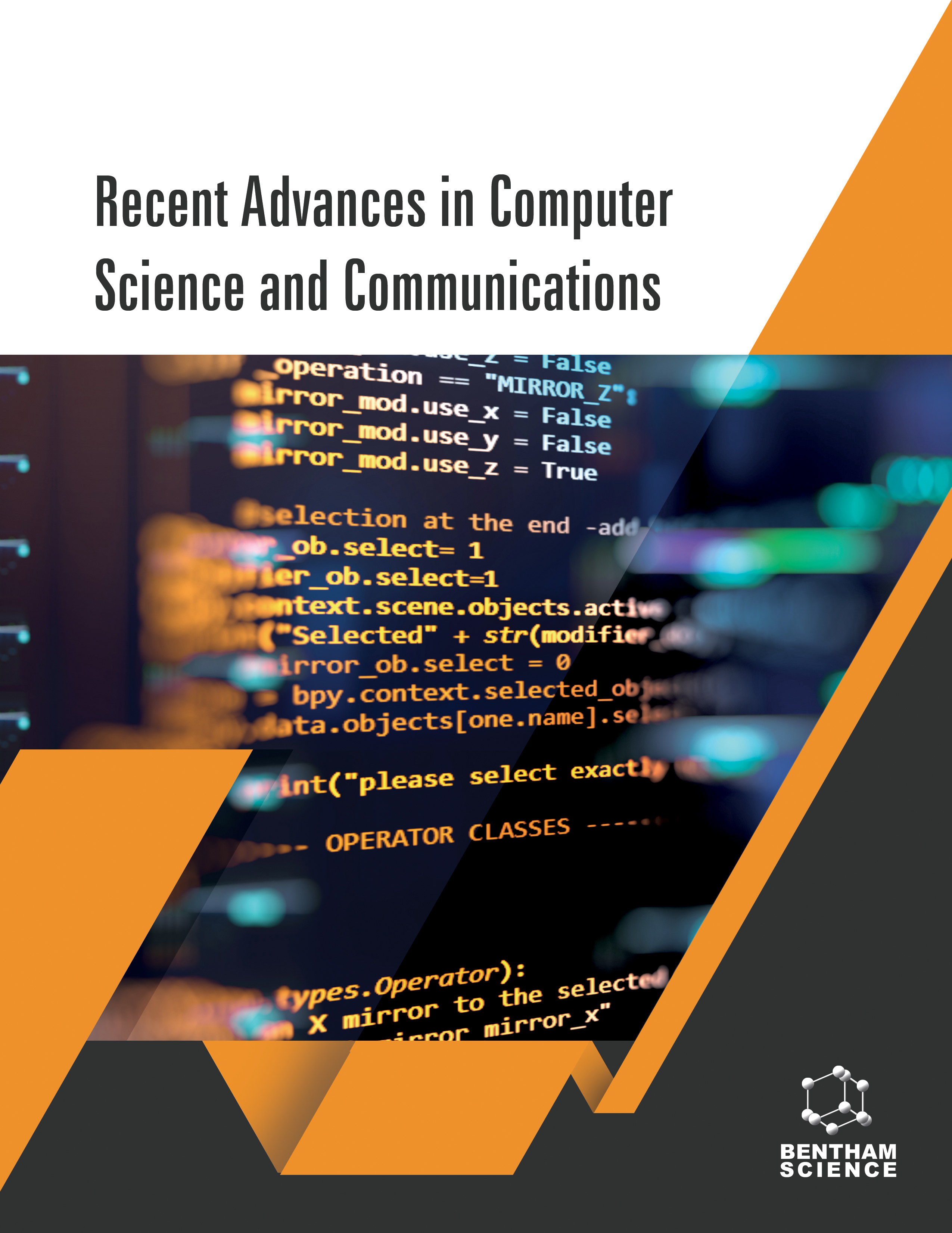- Home
- A-Z Publications
- Recent Advances in Computer Science and Communications
- Previous Issues
- Volume 16, Issue 4, 2023
Recent Advances in Computer Science and Communications - Volume 16, Issue 4, 2023
Volume 16, Issue 4, 2023
-
-
Cooperative Spectrum Sensing in Cognitive Radio Networks: A Systematic Review
More LessAuthors: Sharad Jain, Ashwani K. Yadav, Raj Kumar and Vaishali YadavBackground: Spectrum is the backbone for wireless communications, including internet services. Nowadays, the business of industries providing wired communication is constant while the business of industries dealing with wireless communications is growing very fast. There is a large demand for radio spectrum for new wireless multimedia services. Although the present fixed spectrum allotment schemes do not cause Read More
-
-
-
Colored Edge Detection Using Thresholding Techniques
More LessAuthors: Adolf Fenyi, Isaac Fenyi and Michael AsanteBackground: In this research, a novel algorithm is formulated through the combination of gradient and adaptive thresholding. A set of 5 x 5 convolution kernels were generated to determine the gradients in the four main directions of the image. Objectives: The researcher converted the gaussian equation into a normalized kernel, which was convolved with the gradients to suppress the impact of noise. Methods: The edge Read More
-
-
-
Literature Review on Development of Feature Selection and Learning Mechanism for Fuzzy Rule-Based System
More LessAuthors: Ankur Kumar and Avinash KaurThis research is conducted to study a fuzzy system with an improved rule base. The rule base is an important part of any fuzzy inference system designed. The rules of a fuzzy system depend on the number of features selected. Selecting an optimized number of features is called feature selection. All features (parameters) play an important role in the input to the system, but they have a different impact on the system per Read More
-
-
-
Measurement and Analysis of Low-Frequency Radio Noise in a Typical Southern China Area
More LessAuthors: Luxi Huang, Fan Zhao, Xin Wang, Yingming Chen, Ping Feng, Xiaohui Li and Shuanglin LiBackground: External noise is a necessary factor for calculating the signal-to-noise ratio and evaluating communication quality and is one of the important parameters when designing low-frequency communication schemes or evaluating low-frequency signal quality. Methods: To study the radio noise distribution of each frequency point within the low-frequency band from 40kHz to 80kHz in a typical Southern China region a Read More
-
-
-
An Effective COVID-19 CT Image Denoising Method Based on a Deep Convolutional Neural Network
More LessAuthors: Hanyue Liu, Chunsheng Zhang, Zichao Wang, Qingming Lin, Zhanjiang Lan, Mingyang Jiang, Jie Lian, Xueyan Chen and Xiaojing FanBackground: Faced with the global threat posed by SARS-CoV-2 (COVID-19), lowdose computed tomography (LDCT), as the primary diagnostic tool, is often accompanied by high levels of noise. This can easily interfere with the radiologist's assessment. Convolutional neural networks (CNN), as a method of deep learning, have been shown to have excellent effects in image denoising. Objective: The objective of the study was to us Read More
-
Most Read This Month
Article
content/journals/rascs
Journal
10
5
false
en


